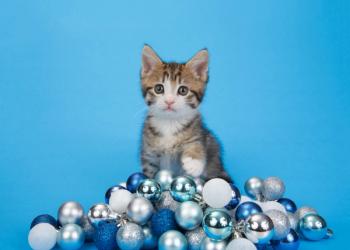
Infectious causes of feline diarrhea (Proceedings)
Infectious causes of gastrointestinal disease in the cat are important for two reasons. The first is clearly the impact on the health of the cat itself. However, it must be noted that while unusual, our feline companions can be sources of zoonotic disease as well.
Infectious causes of gastrointestinal disease in the cat are important for two reasons. The first is clearly the impact on the health of the cat itself. However, it must be noted that while unusual, our feline companions can be sources of zoonotic disease as well. This is especially important for those households with immunocompromised people or young children. An excellent resource with members of their household who are immunocompromised is the Centers for Disease Control website. A brochure available for downloading there is located at
Zoonotic organisms associated with the gastrointestinal tract of the cat include Toxoplasma gondii, Giardia spp., Ancylostoma spp. (hookworm), Campylobacter spp., Cryptosporidium spp., Salmonella spp. and Toxacara cati (roundworm). In two studies regarding zoonotic gastrointestinal agents, prevalence ranged from 0.6% to 32.7% in feces from cats with no clinical signs. The prevalence of any infectious zoonotic agent was 13.1% in adult cats and 40.7% in cats under a year of age. Clearly, addressing the zoonotic potential of feline feces justifies the use of strategic deworming in any cat, but especially in those households with young children or immunocompromised people. Kittens and their queens should be dewormed at three, five, seven, and nine weeks of age. Finally, a convenient deworming regimen for adult cats is simply monthly administration of heartworm preventatives. Two of the most significant and common gastrointestinal zoonotic agents in cats, hookworms and roundworms, are readily controlled with both selamectin and milbemycin. Selamectin has the additional advantage of controlling fleas, and important vector for Bartonella transmission as well as a risk factor for Rickettsia felis and Haemoplasmas. A broad spectrum dewormer, Drontal, is labeled for hookworms, roundworms, and cestodes. While not label approved, clinical application of the drug for flukes has been reported as well.
Table 1: Clinical signs most commonly associated with small (SI diarrhea) or large intestine (LI diarrhea) diarrhea.
Addressing the cat with diarrhea, infectious causes include the above listed zoonotic agents in addition to heartworm disease (another reason to consider preventative), Tritrichomonas, Cystoisospora, Taenia, and viral causes such as panleukopenia, coronoavirus, FIV, and FeLV, as well as Entamoeba, Histoplasma, and Clostridium. While some of these are associated with both large and small bowel diarrhea (FIV, FeLV, coronavirus), identifying the type of diarrhea present may help guide the practitioner in choosing diagnostic assays. A table reviewing clinical signs associated with both types is listed below.
Table 2: Bacterial causes of diarrhea in the cat. It should be noted that mixed bowel diarrhea can be present in most cases that are commonly associated with small intestinal diarrhea only.
Obviously, a significant amount of time, effort, and financial resources can be devoted to the detection of all the above organisms. However, a stepwise approach to the workup will pursue the most commonly detected organisms as well as provide an approach starting with the least invasive and less expensive assays. After the minimum database, all ill cats should have a thorough physical exam and if not recently known, FeLV and FIV status checked via in house immunochromatographic assays. Additionally, regardless of anatomic localization, at least a single, if not multiple, fecal centrifugation flotation should be performed. Zinc sulfate centrifugation provides a 70% positive predictive value for detection of Giardia, allows detection of eggs, cysts, and oocysts and can be performed in house and rapidly. In contrast, a simple flotation technique, without centrifugation, decreases detection of Giardia to 50%. In both small and large bowel diarrhea, a fecal wet mount is a simple, inexpensive assay and provides for the detection of trophozoites in fresh feces. To complete the first wave of diagnostics, if small bowel signs are present, screening for cryptosporidium via acid fast thin smear of feces should be performed. If signs of large bowel diarrhea predominate, rectal cytology for presence of white cells and fungal organisms should be examined, as well as specific testing for Tritrichomonas foetus. If all diagnostics are negative, trial treatment with fenbendazole (50 mg/kg PO q 24 hrs x 5 days) is warranted as organisms are only intermittently shed.
Table 3: Nematodes associated with diarrhea in the cat.
If response to therapy fails and first wave diagnostics are within normal limits, more expensive and targeted diagnostics are recommended. Fecal culture and targeted assays for cryptosporidium (IFA, Meridian Laboratories) are warranted. If large bowel signs predominate and in an appropriate geographic area or appropriate travel history, rectal scraping evaluating for the presence of histoplasma organisms can be considered.
Table 4: Protozoal causes of diarrhea in the cat.
Newsletter
From exam room tips to practice management insights, get trusted veterinary news delivered straight to your inbox—subscribe to dvm360.






